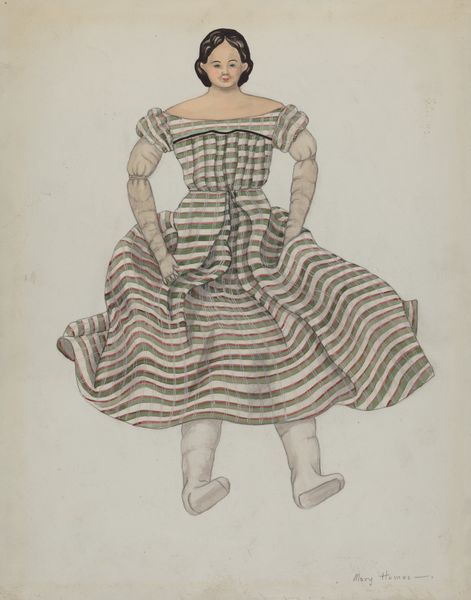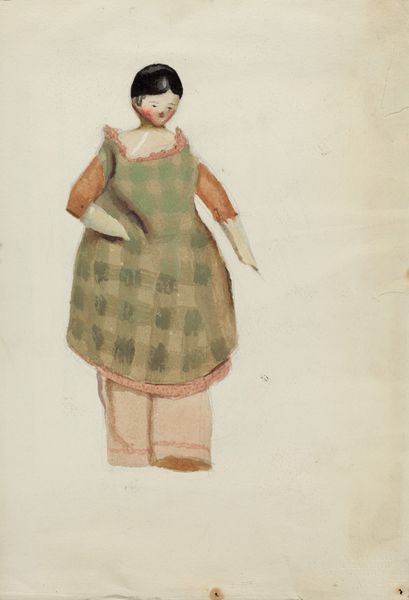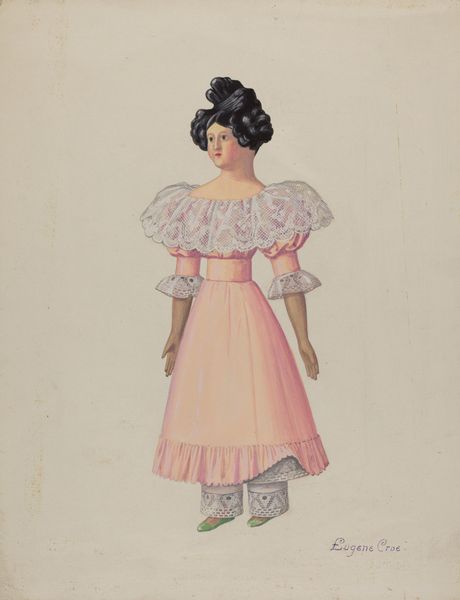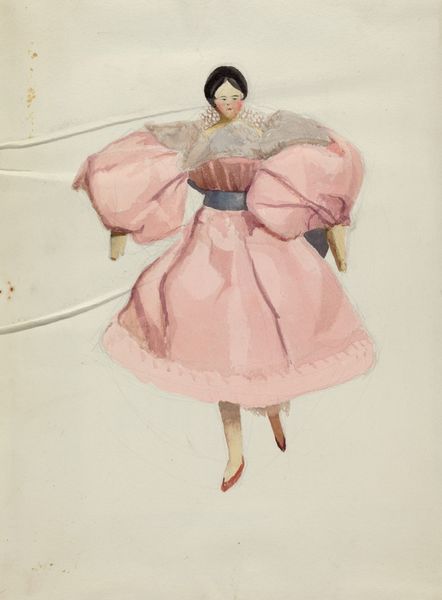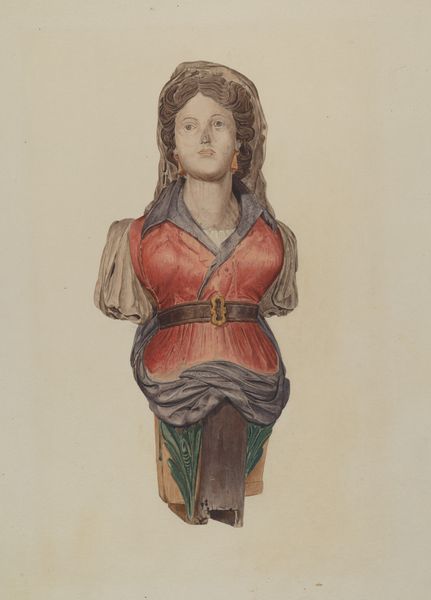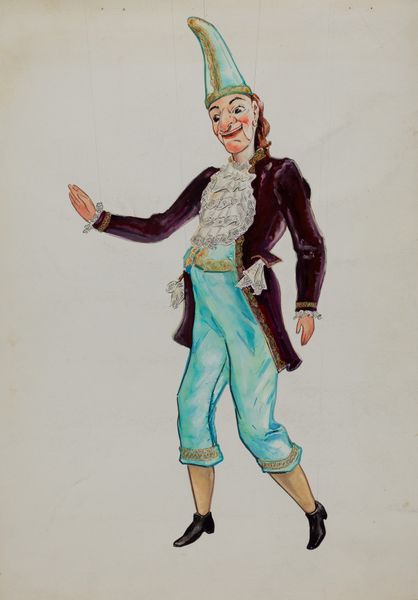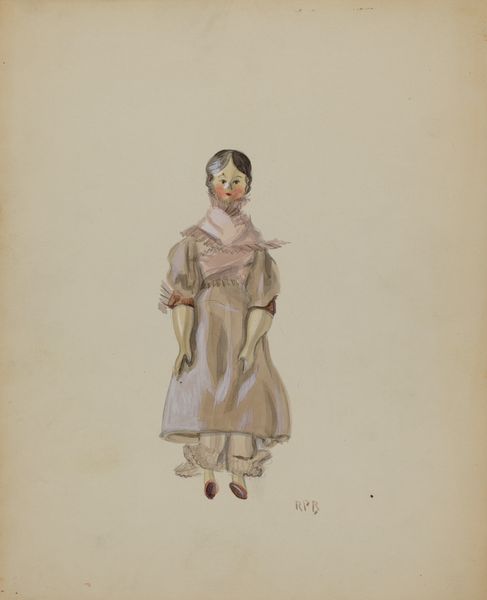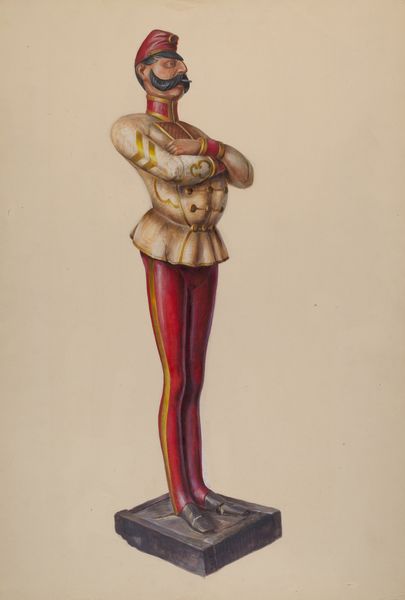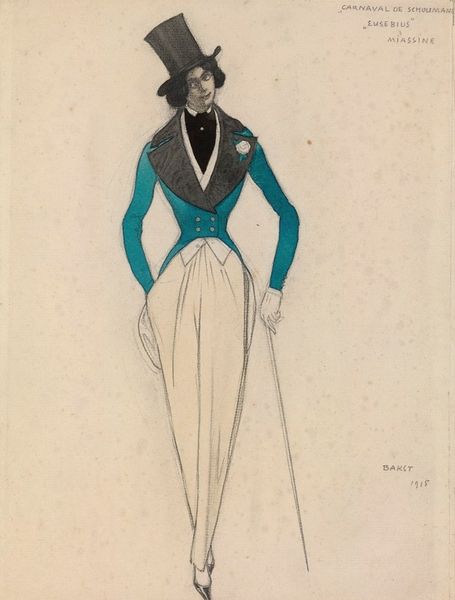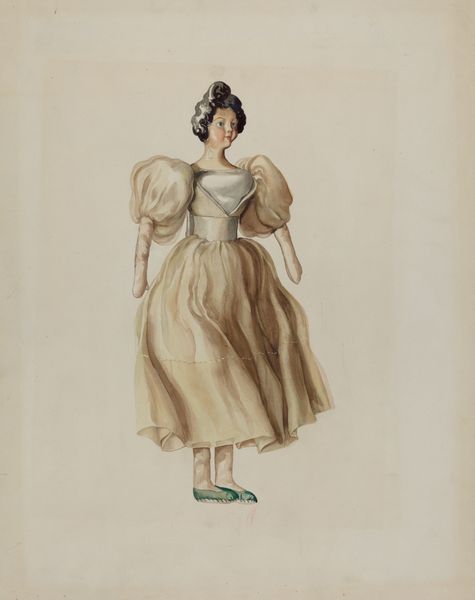
drawing, watercolor
#
portrait
#
drawing
#
caricature
#
figuration
#
watercolor
#
naïve-art
#
portrait drawing
#
academic-art
#
portrait art
Dimensions: overall: 28.8 x 22.9 cm (11 5/16 x 9 in.) Original IAD Object: 19 1/2" high
Copyright: National Gallery of Art: CC0 1.0
Editor: This is "Doll," a watercolor and drawing made around 1936. It has a really unique, almost childlike quality. The proportions are a little off, giving it an endearing sort of folk-art vibe. What jumps out to you when you look at it? Curator: My eye immediately goes to the way the doll is rendered, how the materials contribute to a sense of... artifice. Notice the subtle layering of the watercolor, especially on the clothes. This reveals a process – a physical layering that echoes the doll's own constructed nature, piece by piece assembled. Do you think this treatment elevates the subject or, perhaps, critiques it? Editor: I see what you mean! It does kind of highlight the fact that it's not a "real" person, but made of pieces. I guess the simple materials, like watercolor on paper, emphasize that this isn't about illusionism, but about making. Curator: Precisely! And think about the context of its creation. In the 1930s, there was a widespread discussion about consumerism, labor, and material value. A simple doll, depicted so plainly with these economical materials – watercolor and paper– becomes more than just a portrait. It speaks to larger issues of production and the objects that saturate our lives. How might this relate to the larger socio-economic situation of the time it was made? Editor: It makes me consider where the materials came from, who made them, who would have bought something like this... It shifts the focus from the doll itself to all the hands and processes involved in its existence as an image. Curator: Exactly! It moves beyond just aesthetics into a conversation about the economics of art and its relationship to the everyday. Editor: It's really interesting to consider the 'Doll' in terms of the materials and its production. It offers a totally fresh way to approach it. Curator: Indeed! Hopefully, we’ve shed light on this work by unpacking the social and material histories embedded within it.
Comments
No comments
Be the first to comment and join the conversation on the ultimate creative platform.
